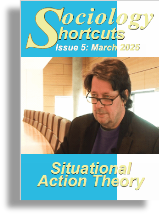|
|
|
|
|
While the relationship between social disadvantage and crime has long been known, an important question that’s often ignored is why only a relatively small proportion of the socially disadvantaged seem to engage in persistent criminal offending? How, in this respect, do we square a circle that, as Wikström and Treiber argue, is based on “the paradox that most persistent offenders come from disadvantaged backgrounds, but most people from disadvantaged backgrounds do not become persistent offenders.”? Situational Action Theory provides an interesting, thought- |

